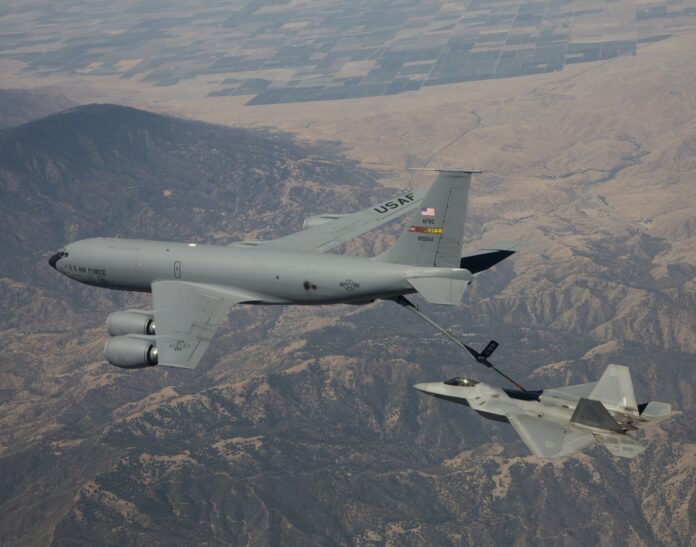In the boundless expanse of the sky, the success of military operations hinges not only on the firepower of fighter jets and bombers but also on the endurance granted by an invisible lifeline—the military tanker aircraft. These flying refueling stations transform the dynamics of aerial warfare by extending the reach and endurance of combat aircraft. In this exploration, we unveil the vital role of military tanker aircraft, delving into their technology, operations, and the strategic advantage they bestow upon modern military forces.
Fueling the Skies: The Essence of Military Tanker Aircraft
Military tanker aircraft serve as the unsung heroes of the skies, providing a critical function that goes beyond mere refueling. These aircraft are equipped with advanced fuel transfer systems, enabling them to rendezvous with fighter jets and bombers mid-flight to replenish their fuel reserves. This capability ensures that combat aircraft can remain airborne for extended periods, execute complex missions, and operate far from their home bases.
Historical Prelude: From Hoses to High-Tech Systems
The concept of in-flight refueling dates back to the early 20th century, when aviators attempted daring experiments involving hoses, grappling hooks, and primitive methods to transfer fuel between aircraft. Over time, technology evolved, and dedicated tanker aircraft were developed to streamline the process. Today, military tanker aircraft are equipped with state-of-the-art systems that enable rapid and efficient fuel transfer.
Boom and Drogue: The Dance of Refueling
Military tanker aircraft employ two primary methods for in-flight refueling: the boom system and the drogue system. The boom system involves extending a telescopic tube (the boom) from the tanker aircraft to connect with a receptacle on the receiving aircraft. This method is particularly suited for larger aircraft and enables faster fuel transfer rates. On the other hand, the drogue system employs hoses and baskets (drogues) that extend from the tanker, allowing receiving aircraft to make a controlled connection for fuel transfer.
Precision and Skill: The Human Element
While advanced technology plays a pivotal role in in-flight refueling, the human element remains essential. Skilled boom operators and pilots navigate the delicate process of aligning the boom or drogue with the receiving aircraft’s receptacle. The ability to maintain precise formation, adapt to varying flight conditions, and communicate effectively is a testament to the expertise of the tanker crew.
Strategic Flexibility: Extending Aircraft Reach
The significance of military tanker aircraft lies in their ability to extend the operational reach of combat aircraft. Fighter jets and bombers can perform missions that require longer flight times, including strategic reconnaissance, long-range bombing raids, and rapid response to emerging threats. This strategic flexibility redefines the limits of military operations and grants commanders the freedom to deploy assets wherever they are needed most.
Multi-Role Capabilities: Beyond Refueling
While refueling is the primary role of military tanker aircraft, their capabilities extend beyond providing fuel. These aircraft can serve as airborne command and control centers, relaying information and coordinating operations between multiple aircraft and ground forces. Additionally, tanker aircraft can transport personnel, cargo, and medical supplies, enhancing their role in both military and humanitarian missions.
Advancements in Technology: The Modern Tanker Fleet
Modern military tanker aircraft are equipped with advanced technology to enhance their efficiency and capabilities. Automated systems aid boom operators in maintaining precise alignment during refueling operations. The introduction of probe-and-drogue systems has improved compatibility with a wider range of aircraft, enabling more versatile refueling options. Additionally, digital communication systems facilitate real-time coordination between tanker aircraft and receiving units.
Global Reach: Partnerships and Alliances
The impact of military tanker aircraft transcends national boundaries. Many countries collaborate through international partnerships and alliances to share refueling capabilities. This cooperation allows for shared resources, increased interoperability, and the ability to project power across vast distances. Tanker aircraft symbolize the spirit of collaboration that underpins global security efforts.
Operational Impact: The Force Multiplier
The presence of military tanker aircraft in the skies has a significant impact on military operations. They act as force multipliers, enabling combat aircraft to remain in the air longer, execute complex missions, and respond rapidly to emerging threats. Tanker aircraft facilitate the seamless execution of joint and combined operations, showcasing the synergy between different aircraft types and military branches.
Conclusion: The Lifelines of Aerial Power
Military tanker aircraft serve as the lifelines that sustain aerial power, endurance, and reach. They epitomize the spirit of support and collaboration in the skies, ensuring that combat aircraft are equipped to fulfill their missions with precision and impact. The roar of engines and the synchronized dance of refueling hoses and booms are not just sights and sounds; they are symbols of determination, resilience, and the unwavering commitment to achieve victory in the limitless theater of the sky.
As military tanker aircraft take flight, extending their lifelines to combat aircraft below, they embody the essence of aviation’s role in modern warfare—a role that goes beyond individual aircraft and showcases the collective strength of aerial forces. In the symphony of military operations, tanker aircraft provide the harmonious notes that sustain the melody of victory, transforming the skies into a canvas of support, endurance, and power.
























